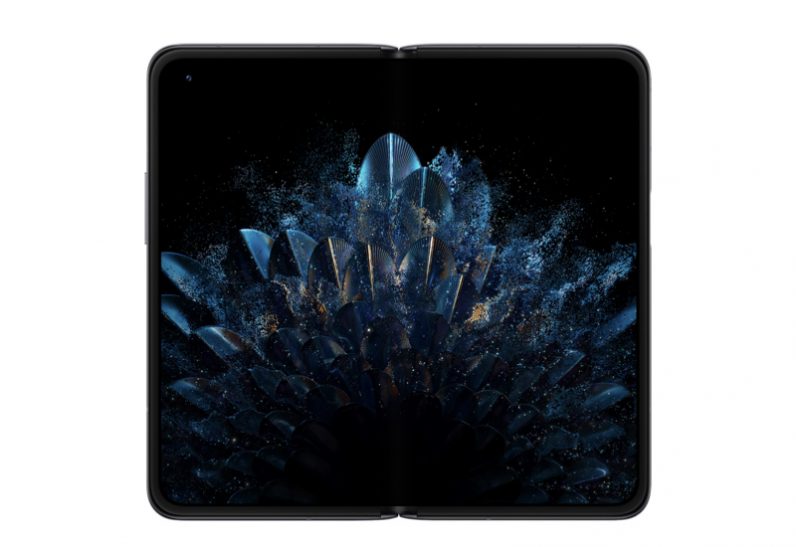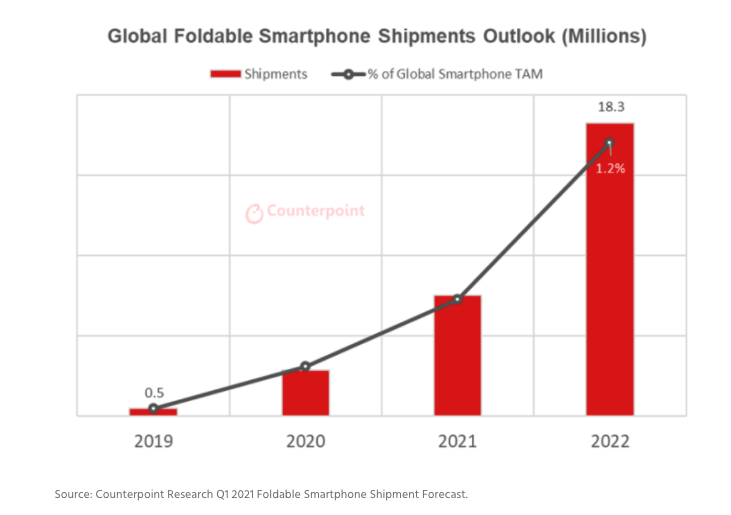While the device uses a similar type of folding mechanism as the Samsung Z Fold 3, there are certain design differences. The Find N is shorter and wider than the Fold 3 when it’s folded. As a result, it has a more traditional 18:9 display aspect ratio, compared to the tall 25:9 ratio on Samsung’s device. Oppo’s new device unfolds into a 7.1-inch display with an 8.4:9 (almost like a square) aspect ratio as compared to the 22.5:18 aspect ratio of the Fold 3. Before we talk more about the phone’s features, let’s take a look at its specs.
Specsheet
Folded screen: 5.49-inch AMOLED screen; 18:9 aspect ratio Unfolded screen: 7.1-inch AMOLED screen; 8.4:9 aspect ratio; 120Hz refresh rate Processor: Qualcomm Snapdragon 888 Camera: 50-megapixel main sensor + 16-megapixel ultrawide sensor + 13-megapixel telephoto sensor Battery: 4,500mAh Charging: 33W wired charging; 15W wireless charging; 10W reverse wireless charging
Features
Oppo talked a lot about its hinge design with 136 components that are aligned with 0.01mm precision to make sure it works smoothly. It said its “water-drop hinge” solves problems like visible creases and gaps created by the folding mechanism. To make the device sturdy, the company has secured the back with Gorilla Glass Victus. Ben Wood, Chief Analyst at CCS Insight said the Chinese company has worked hard to make the phone durable: The phone has a ‘FlexForm’ mode in which the phone can sit partially unfolded between 50 to 120 degrees. That should allow for video calls, laptop-like note-taking, and 4K timelapse recording without the need for a tripod.
Pricing and availability
While Oppo’s device looks tempting to use, it will be just available in China from December 23. The Find N will cost RMB7,699 ($1,210) for the 8GB+256GB variant and RMB8,999 ($1,415) for the 12GB+512GB variant. This price is much cheaper than the $1,799 starting cost of the Z Fold 3.
Future of foldables
Samsung has dominated the foldable space until now with the Z fold. While the company’s first-gen products had teething issues, the last two iterations have been better received, and quite popular. The Korean tech giant said in October that its Z Fold 3 is selling 5 times more than its predecessor, and the Z Flip 3 is selling a whopping 40 times more than its previous version. Considering the company sold an estimated 1.02 million phones in 2019 and 2020, those are impressive numbers. According to a report by research company Counterpoint, the foldable market will be 1.2% of the overall smartphone market by the end of the next year. Another analysis by the firm suggested the foldable market will grow by 10 times in 2023 as compared to 2023. It noted that shipments for 2021 would be around 9 million. By that calculation, almost 30 million foldables will be shipped in 2023. While the report says Samsung will still have 75% of that market, Oppo can still grab the second or third spot by getting its device in people’s hands quickly. The Oppo Find N is cheaper than the Z Fold 3, but it’s the first-gen device from the company and it might have some teething issues. As the price point is above $1,000, it will still remain a purchase for a niche audience wanting to try a new form factor. But it could be the first device to give Samsung devices give a run for their money, as Xiaomi’s Mi Mix Fold sounds like a bad purchase. Would you buy a foldable that won’t receive updates? Maurice Klaehne, a senior research analyst at Counterpoint, noted that foldables will have a bigger impact when they’re priced under $800 with all software and durability issues sorted out. Given this year’s releases, we probably won’t reach that price point until sometime in 2023. I, for one, am sticking with my trusty old non-folding iPhone.

